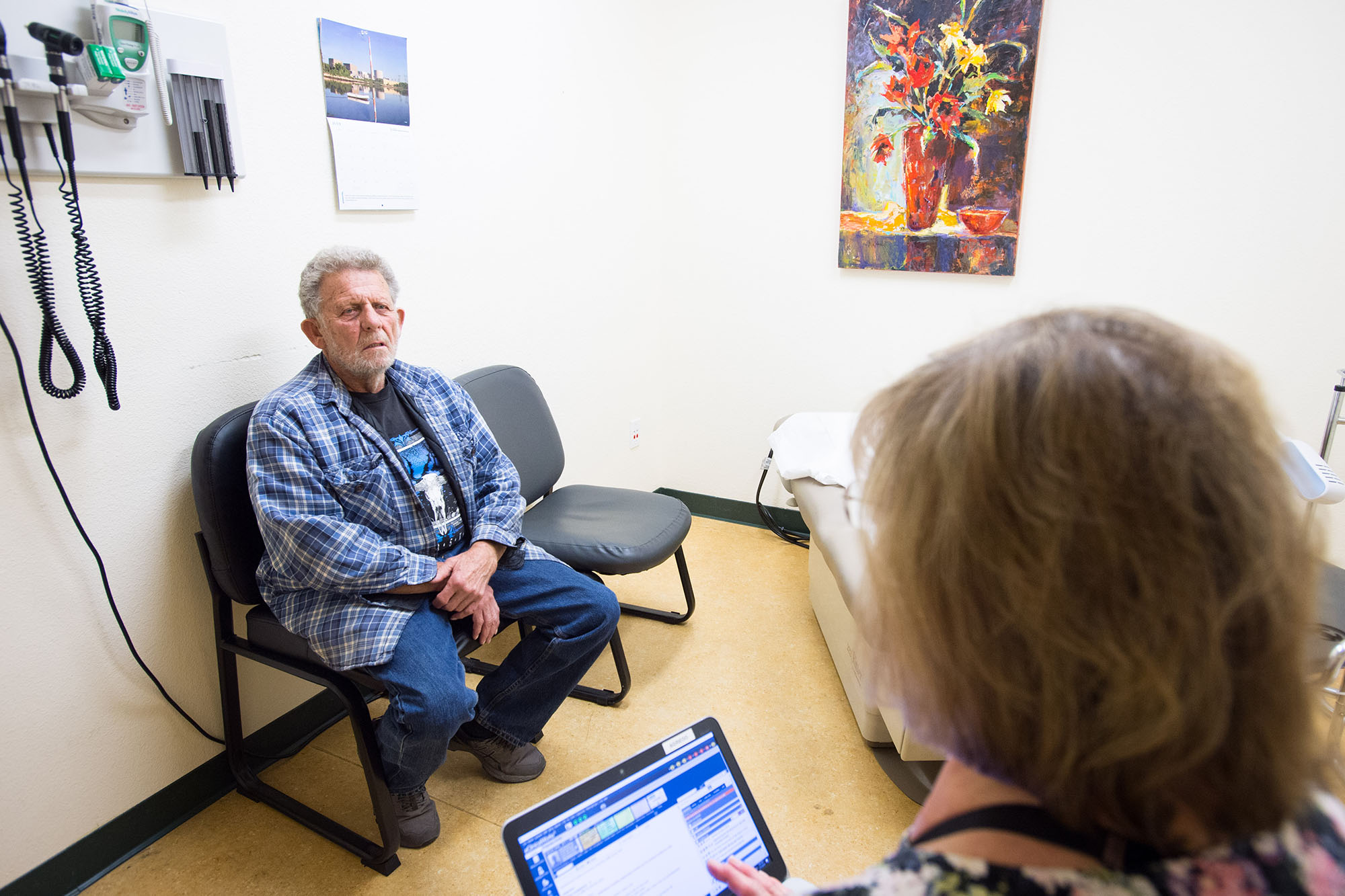Under California’s implementation and improvement of the Affordable Care Act (ACA), the percentage of Californians who are insured has risen to an all-time high. The goal of covering every Californian is within reach. The state is in the midst of a critical discussion about how to expand coverage to the approximately three million Californians who remain without health insurance, as well as how to preserve current sources of coverage for insured Californians.
Starting in the spring of 2018, CHCF began to curate, through this page, key California-specific resources and analyses to inform the discussion around policy options designed to help expand coverage to all Californians. Many of the resources are presentations from the hearings of the California Assembly’s Select Committee on Health Care Delivery Systems and Universal Coverage (Assembly Select Committee), held between October 2017 and February 2018. A full list of presentations is available. All the linked Assembly Select Committee presentations are also available for download below.
This page will continue to be updated in 2019 as the discussion in California around preserving and expanding coverage evolves. If you have suggested additions, please email Anne Sunderland.
Resources are organized reverse-chronologically and cover the following topics:
- Current Sources of Health Coverage in California
- Who Remains Uninsured in California?
- Immigration Status as a Barrier to Health Coverage
- Affordability on the Individual Market as a Barrier to Health Coverage
- Policy Options Designed to Expand Coverage
- Analysis of Proposals Designed to Expand Coverage
Current Sources of Health Coverage in California
The following presentations were all given before the Assembly Select Committee in October 2017 and provide a broad overview of how Californians are currently covered and how the state’s health insurance markets function.
Overview of Coverage and Care in California (PDF) (Insure the Uninsured Project [ITUP], October 23, 2017)
Public Programs: Medicare, Medicaid, and CHIP (PDF) (Center on Budget and Policy Priorities, October 23, 2017)
Individual Health Insurance Market (PDF) (ITUP, October 23, 2017)
Employer-Sponsored Insurance in California (PDF) (UC Berkeley Center for Labor Research and Education, October 23, 2017)
Safety Net Programs, Populations, and Providers (PDF) (ITUP, October 23, 2017)
Who Remains Uninsured in California?
The resources below provide in-depth analyses of the approximately three million Californians who continue to live without coverage.
More Than 500,000 Californians Estimated to Be Eligible for Medi-Cal but Uninsured in 2016-2017
While more than 90% of those eligible for Medi-Cal are enrolled, there are still around half a million Californians who could enroll in the program but don’t. This blog dives deeper into who makes up this population and what the state can do to increase enrollment. (Laurel Lucia, UC Berkeley Center for Labor Research and Education, March 19, 2019)
Snapshot: Remaining Uninsured in California (Updated)
Uses California Health Interview Survey data to examine California’s uninsured in 2017 — by region, income, and ethnicity. It also summarizes projections from the California Simulation of Insurance Markets (CalSIM) model (see next entry) that the number of uninsured in California will rise in future years. (ITUP, February 1, 2019)
California’s Health Coverage Gains to Erode Without Further State Action
Starting in 2019, the ACA’s individual mandate penalty for not having health insurance is no longer in effect. This report, based on the CalSIM microsimulation model, projects how many Californians will be uninsured in 2020 and 2023 in the wake of this federal policy change. It details which populations are projected to remain uninsured, such as undocumented Californians, who make up the largest group, and others who struggle to afford insurance. It also provides an overview of the trend in the uninsured rate in California from 2012 to 2017. (Miranda Dietz et al., UC Berkeley Center for Labor Research and Education, November 2018)
California’s Uninsured: Progress Toward Universal Coverage
Relies on the US Census Bureau’s Current Population Survey to explore who was uninsured in California in 2016, three years after full implementation of the ACA. (Paul Fronstin, California Health Care Foundation, August 2018)
Health Coverage Gaps in California
This presentation to the Assembly Select Committee uses a variety of data sources to describe California’s remaining uninsured, as well as the main factors behind lacking insurance — namely, immigration status and affordability. (Laurel Lucia, UC Berkeley Center for Labor Research and Education, October 23, 2017)
Immigration Status as a Barrier to Health Coverage
Undocumented adults remain ineligible for both Medi-Cal and coverage through Covered California. For this reason, immigration status is the most prevalent reason for lacking coverage among California’s uninsured. These resources provide a deeper overview of undocumented Californians and describe the challenges they experience accessing health care. As undocumented Californians have continued to be excluded from traditional forms of coverage, some counties have stepped up to provide them with safety-net health services.
Health Care Programs for California Immigrants
This fact sheet reviews existing health care programs for immigrants in California (ITUP, May 31, 2019)
2019 County Medically Indigent Programs
Counties play a critical role in providing health care to California’s remaining uninsured, including undocumented adults. However, services vary widely by county. This brief provides an overview of the role of counties in the health care safety net, and a snapshot of different counties’ medically indigent programs. (ITUP, March 21, 2019)
Reducing Access Disparities in California by Insuring Low-Income Undocumented Adults
Using the latest California Health Interview Survey (CHIS) data, researchers draw a basic demographic profile of undocumented Californians with low incomes age 19–64, including health insurance status, health status, and access to care. A higher percentage of undocumented adults are working, live in families with children, and report being relatively healthy compared to documented California adults with low incomes. However, over 90% of undocumented adults are uninsured, and they report significantly higher disparities in access to health care. (Nadereh Pourat and Ana E. Martinez, UCLA Center for Health Policy Research, February 19, 2019)
Six Facts About Undocumented Californians (Nadereh Pourat, UCLA Center for Health Policy Research, June 2018)
Immigrant Communities in California Under the Cloud of Immigration Enforcement (PDF) (ITUP, January 2018)
Health Coverage and Care for Undocumented Immigrants
Due to its publication in 2015, some of the data and analysis of the political environment in this paper are slightly outdated. (Shannon McConville et al., Public Policy Institute of California, November 2015)
Affordability on the Individual Market as a Barrier to Coverage
Although the ACA made coverage for many in the individual market much more affordable, challenges remain. The lack of affordability in the individual market is second only to immigration status as the biggest driver of the state’s uninsured rate. The following reports dive deeper into these affordability challenges, which are exacerbated by California’s high cost of living.
Affordability on California’s Individual Market Under the ACA
This issue brief explores trends in key data on the affordability of health coverage in California from 2013, the last year before full implementation of the ACA, to 2017, the most recent year for which key data are available. To put individual market affordability challenges in context, the authors compare the spending and cost burden experienced by those relying on the individual market to Californians with employer-sponsored coverage. (State Health Access Data Assistance Center, May 30, 2019)
California’s Individual Market and Affordability: What Policymakers Need to Know
Understanding how the individual market functions and the factors that shape affordability is notoriously complex. This resource reviews the basics of the individual market, defines key terms, explains key Affordable Care Act provisions, and provides real-life scenarios that illustrate the affordability challenges faced by consumers. (Marian Mulkey and Katherine Wilson, April 2019)
Towards Universal Health Coverage: California Policy Options for Improving Individual Market Affordability and Enrollment
This paper provides an overview of the affordability challenges for those already enrolled in the individual market to maintain coverage, as well as the over one million Californians who are eligible for Covered California but remain uninsured. (Laurel Lucia and Ken Jacobs, UC Berkeley Center for Labor Research and Education, March 5, 2018)
Balancing the Books: How Affordable Is Health Insurance Through Covered California When Local Cost of Living Is Taken Into Account?
California’s high cost of living can make it even more difficult for families to afford health insurance. This analysis identifies the minimum amount a typical household would need to earn to cover its basic needs (housing, food, etc.) and Covered California premiums and out-of-pocket costs after federal subsidies. An interactive map shows how this amount varies widely by California county, mostly due to the cost of living. In every California county, there are families and individuals who fall into an affordability gap: They earn too much for Medi-Cal but not enough to afford health insurance through Covered California, even with subsidies. (California Health Care Foundation, June 2016)
Policy Options Designed to Expand Coverage
The resources below highlight state bills and broader policy proposals from the 2019-2020 legislative cycle.
Final 2019-20 State Budget Continues the Move Toward Universal Coverage
An overview of the major health provisions included in the final 2019-2020 budget signed by Governor Newsom. (ITUP, June 28, 2019).
ITUP Review of the 2019-20 Budget May Revision
This Legislative Update provides an overview of the May Revise and health and health-related proposals. (ITUP, May 14, 2019)
Health Bills Introduced: California Legislative Session 2019-2020
This fact sheet provides a brief description of many of the newly introduced health care bills in the California Legislature, including those designed to increase coverage and improve affordability. (Sana Baig, ITUP, March 4, 2019)
Governor Newsom’s First Budget: Health Care Highlights
A summary of Governor Newsom’s executive actions and budget proposals, announced on his first day in office, to expand health coverage and improve affordability. (Elia Gallardo, ITUP, January 11, 2019)
Analysis of Proposals Designed to Expand Coverage
As various policy options designed to expand coverage have been unveiled since 2017, different analyses assessed key implementation considerations.
Informational/Oversight Hearing: Health Insurance, Affordability Assistance for Californians: Options and Funding
This joint hearing explored “proposals that will help achieve the goals of providing assistance for Californians when affordability challenges are a barrier to enrollment in the individual market.” Includes detailed presentations by Laurel Lucia from the UC Berkeley Center on Labor Research and Education; Peter Lee, executive director of Covered California (PDF); and the Legislative Analyst’s Office (LAO). (Assembly Health and Assembly Budget Subcommittee, and Senate Budget and Fiscal Review Subcommittee, February 12, 2019)
Analysis of the Medi-Cal Budget
In the section “Expands Coverage for Income‑Eligible Young Adults, Regardless of Immigration Status,” the LAO estimates net general fund costs for 2019–20 of $134 million to allow undocumented adults with low incomes, age 19–25, to enroll in Medi-Cal. The LAO also projects out-year costs and estimates that this Medi-Cal expansion would reduce the state’s overall uninsured rate by about 4%. (LAO, February 13, 2019)
The 2019-20 Budget: The Governor’s Individual Health Insurance Market Affordability Proposals
Provides the LAO’s official assessment of the governor’s proposals to (1) create a state requirement that most Californians purchase health insurance coverage (“individual mandate”) or pay a financial penalty and (2) use the revenues from this penalty to fund additional health insurance subsidies for households purchasing coverage through Covered California. (LAO, February 7, 2019)
Towards Universal Health Coverage: Expanding Medi-Cal to Low-Income Undocumented Adults
Under a scenario in which all restricted-scope enrollees are automatically transitioned to full-scope Medi-Cal coverage and additional eligible individuals newly enroll, approximately 1.05 million undocumented adults would be predicted to enroll, of which 104,000 are estimated to be young adults age 19–25 and 25,000 are estimated to be seniors age 65 and over. (Laurel Lucia, UC Berkeley Labor Center for Labor Research and Education, February 5, 2019)
Options to Improve Affordability in California’s Individual Health Insurance Market (PDF)
Prepared pursuant to AB 1810, which required Covered California to develop options to improve affordability for consumers with low and middle incomes, this report presents a range of policy options for enhancing the financial support provided by the ACA and estimates the enrollment increases and consumer cost reductions that could be gained by Californians if such policies were enacted. (Covered California, February 1, 2019)
UPDATE: California Strategies: Covering California’s Remaining Uninsured and Improving Affordability
This updated issue brief analyzes policy proposals advanced in 2018 to move the state closer to universal coverage. (ITUP, October 2018)
A Path to Universal Coverage and Unified Health Care Financing in California (PDF)
This report attempts to synthesize the information and findings that emerged from the six Select Committee hearings into a coherent set of possible recommendations for the California Assembly. (Andrew Bindman, Marian Mulkey, and Richard Kronick, March 2018)
Exploring Public Options in California (ITUP, March 20, 2018)
Implementation Considerations for Universal Coverage: ERISA (PDF)
A presentation to the Assembly Select Committee. (Ann Marie Marciarille, University of Missouri, Kansas City, School of Law, February 5, 2018)
Implementation Considerations for Universal Coverage: Federal Law Considerations and Medicare (PDF)
A presentation to the Assembly Select Committee. (Juliette Cubanski, Kaiser Family Foundation, February 5, 2018)
Understanding the Rules: Federal Legal Considerations for State-Based Approaches to Expand Coverage in California (PDF)
Also available is the February 2018 testimony of Chiquita Brooks-LaSure (PDF), managing director, Manatt Health, to the Assembly Select Committee based on this paper. (California Health Care Foundation, February 2018)
Key Questions When Considering a State-Based, Single Payer System in California
Also, the February 2018 testimony of Susan Philip to the Assembly Select Committee (PDF) based on this paper. (California Health Care Foundation, November 2017)




